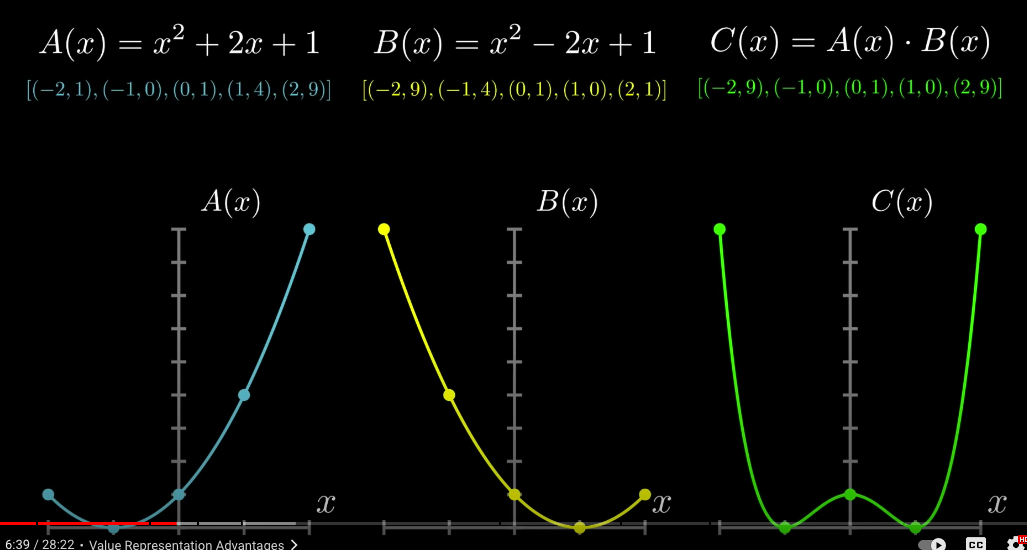I am trying to understand the discrete Fast Fourier Transform. I get the idea of switching between coefficient and value representations to and then back but I am stuck in figuring out how the multiplication of 2 polynomials using their value representation works.
The screenshot below is from a Reducible video (at time 6:39) that explains the Fast Fourier transform. I see that we need 5 points to get $C(x)$, which is of degree $4$, but I don't see how multiplying say the first point of $A(x)$ and $B(x)$, that is, $(-2,1) \times (-2,9)$ gives $(-2,9)$
There's a similar answer here but the steps aren't provided just the final answer, which still baffles me.

